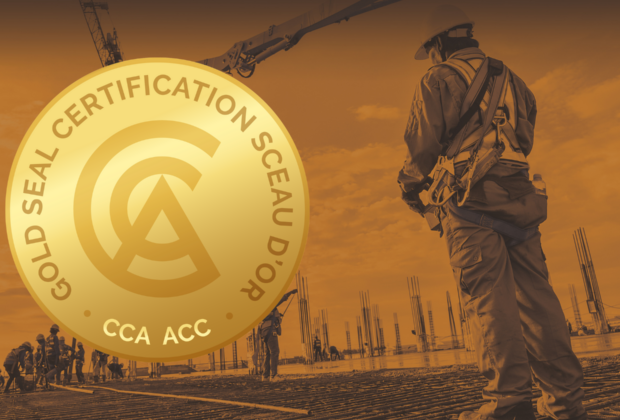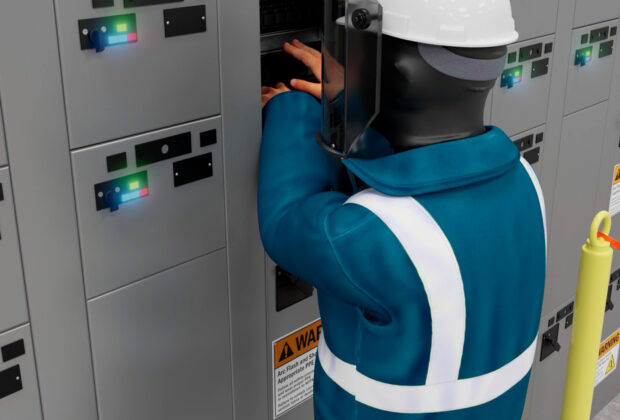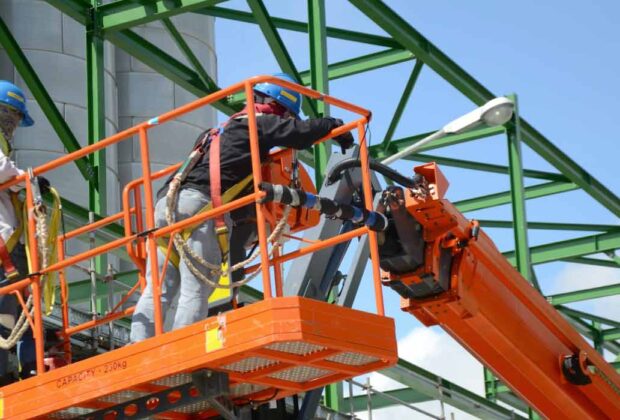Although we can never have an exact number due to underreporting, many Canadians are injured at work every year. Workplace injuries range from minor to very serious or fatal, and some injuries can change the lives of the victim and those around them forever. The most common workplace injuries that we see over and over again are often related to the trades, and include falls, motor vehicle accidents, electrical-related injuries, ground disturbance accidents, and exposure to chemical hazards. Accidents can always happen, but most common workplace injuries are entirely preventable with the right training, PPE, and mindset surrounding safety.
Falls

Lunch atop a skyscraper, 1932 original photo by Charles C. Ebbets
Remember this famous photograph? Thankfully, workers today demand more safety measures at work than they had in 1932. In fact, it took until the 1970s for safety body belts to become the industry standard for employees working at great heights! Today, under CCOHS regulations, an employee must wear a safety body belt when working at a height over three meters (10 feet).
Although fall arrest safety has significantly improved over the years, accidental falls at work remain a serious issue for Canadian workers. From 2000 – 2018, falls accounted for more than 100,000 lost time claims, and falls are responsible for more than 40,000 injuries at work in Canada per year.
We know that fall protection training works, as provinces that have implemented their own focused training requirements reported serious improvements in reported fall accidents. For instance, after Newfoundland introduced heightened training requirements for fall protection in January of 2012, reported fall injuries fell by 25% in just over a year.
The best way to reduce fall injury numbers is an increased focus on fall arrest awareness and training. Canadian federal legislation on fall protection provides the foundation for fall protection laws that employers must follow, and each province and territory has added their own legislation to it. For instance, in 2015, following traumatic deaths of workers due to falls, new mandatory training on fall protection was implemented in Ontario for every employee working at a height of 3 meters (10 feet) or more. While fall protection training was a requirement before, Ontario mandated that this training be taken in a classroom setting by a certified provider.
However, it’s important to remember that online training and classroom training can go hand-in-hand as a form of blended learning, and you can also take the online training in advance of the classroom training if needed. Some provinces are fine with eLearning fall protection courses that meet the requirements of their legislation, but it’s important to check the laws in your local jurisdiction before committing to a specific type of training.
Motor vehicle accidents
Motor vehicle accidents are very common for workers in Canada. For instance, in Ontario, occupational motor vehicle accidents were the second highest cause of traumatic fatalities in the workplace from 2009-2017. In British Columbia, a media release from Road Safety at Work states that 33% of all work-related traumatic deaths in the province are caused by motor vehicle accidents.
These statistics remind us how important it is that workers know how to drive safely. Like wearing a seatbelt, the proper road safety courses are another tool in a worker’s arsenal to keep them safe on the road. There are cost benefits as well; if workers are driving safely, you’ll have fewer accidents (which leads to less time loss), lower insurance costs, and less money spent on repairing damaged vehicles.
We offer driver safety courses tailored to all different types of driving, from dealing with fatigue in truck drivers to advanced 4X4 off-road training. We also offer defensive driving, which is an important skill for all drivers across multiple industries. Drivers with defensive driving skills are often able to respond more confidently to sudden road hazards (like getting a flat tire on the highway or needing to properly control the vehicle after hitting a patch of black ice) and stop the vehicle as safely as possible.
Electrical-related accidents
Electrical accidents are another common cause of injuries in the workplace. For instance, in 2019 in Alberta, there were 249 electrical power line contacts leading to injuries across multiple industries and professions. The summary of the reported injuries indicates that the reasons for the accidents varied widely, but all could have been prevented with proper awareness, care, and attention surrounding electrical facilities and how electricity works.
Shifting away the confusion around electricity is a key reason as to why electrical safety training is important. Electrical safety programs and training prevent accidents by educating workers and supervisors on what electricity does, how it can cause a serious accident, and, most importantly, the steps they can take to protect themselves and others around them.
Proper electrical safety training extinguishes the myths surrounding electricity. Perhaps the most common electrical myth is that low voltage equals low hazard. However, electrical damage is more about the rate of flow of electric current, the path the electric current takes through the body, and the length of time the current flows through the body.
Another misconception is what constitutes energized and non-energized work. Some employers might think that a policy stating that their employees don’t work around energized sources is enough, but in general, if an employee is working on something that could potentially have electricity running through it at any point, the employer should have an electrical safety program that complies with all appropriate legislative requirements.
Ground disturbance accidents
Workplace accidents related to ground disturbance continues to be a common source of injuries for workers. Ground disturbance accidents are responsible for over a billion dollars in underground infrastructure damages per year. Exposed underground infrastructure, like underground powerlines and pipes, can pose a risk to the public and workers and cause outages for essential services, like water and power.
The best way to prevent workers from ground disturbance hazards is with proper ground disturbance training. A common misconception with underground infrastructure is that it’s buried deep underground and shouldn’t be an issue for workers that are digging close to the surface. However, you can find infrastructure like gas lines or powerlines buried at shallow depths: hold a standard 30cm ruler vertically on the ground, and image another 8-10cm connected to that. A powerline or gas line is often buried at that depth. In short, it’s easy to come in contact with underground infrastructure, and the best way to prevent damage to it and worker injuries is knowing where the underground infrastructure is located before you start digging, and how to recognize markings that indicate where things like utilities are buried.
Exposure to chemical hazards
Chemicals of some kind can be found in every workplace, so it’s no surprise that exposure to chemicals is a common workplace injury. Most workplaces already mandate WHMIS training so employees know how to properly interact with any chemical products they may use during their shift.
Since WHMIS training is so widespread and taught in so many different types of workplaces and industries, some may think that WHMIS is mainly just a lesson in common sense, and not take it as seriously as they should. But WHMIS training provides comprehensive information surrounding chemical safety, including terminology, that isn’t known by everyone. Subjects from occupational exposure limits (OEL) to how to read an SDS (Safety Data Sheet) are included in certified WHMIS training courses. Danatec offers award-winning WHMIS certification courses that include real-life stories from workers whose lives were changed forever from exposure to hazardous chemicals as a way to showcase the seriousness of being complacent around chemicals, and to make an impact on learners in an attempt to heighten the seriousness surrounding WHMIS training.
Keeping workplaces accident free
There are so many factors that affect whether an accident happens in the workplace or not, but it’s important to remember that almost all workplace accidents are preventable. The biggest way we can prevent workplace accidents is to change the overall mindset that workers have surrounding safety and the importance of safety training. Part of that process is making safety training courses that are not boring and focus on the seriousness of safety rather than making the learner go through the motions with memorization and exams. At Danatec, we strive to create all our courses with core learning and motivation principles so that employees and employers can have the best learning outcomes after taking our courses.




Comments are closed.